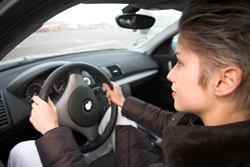Safer use of driver-assistance technologies
Cars these days are equipped with driver-assistance technologies as a matter of course but how drivers interact with them is still largely unknown. The EU-funded 'Differences and similarities in driver interaction with in-vehicle technologies' (INTERACTION)(opens in new window) project was initiated to address this. With 12 partners from 8 EU countries plus Australia, INTERACTION helped determine the patterns of usage of in-vehicle technologies (IVTs) and their effect on driver performance. Based on study outcomes, suitable actions were recommended to address performance issues. INTERACTION collected driver data to assess five IVTs (cruise control, speed limiters, speed alerts, navigation systems and mobile phones). Sources included focus groups and detailed web-based questionnaires involving over 7 500 participants. The study also experimentally observed nearly 100 participants who collectively logged over 3 000 real driving hours. At 88 %, navigation systems were the most commonly used technology. This was followed by mobile phones while driving (52 %), cruise control (41 %), speed alert (31 %) and speed control (18 %). Generally, IVT systems were used appropriately and safely, and most respondents considered them useful. However, numerous drivers admitted to using IVTs in potentially distracting, unsafe or illegal ways. This was observationally confirmed, detailing the frequencies, locations and speeds at which some drivers use IVTs unsafely. Project members also identified other key safety issues. These include over-reliance on IVTs that partially automate driving, resulting in skill loss and inappropriate response to danger. Other risks include confusion, where too many systems compete for a driver's attention, unfamiliarity with the limitations of IVTs and poor driving habits. The data cross-referenced various behaviours for each of the seven countries studied. The study detailed its solutions. These include redesigning systems to include safeguards and lockouts, such as preventing use in a moving car. Other design elements include integrating systems, for example where cruise control might obtain local speed limit data from navigation systems and automatically adjust accordingly. Other recommendations cover changing public awareness, training, legislation and enforcement. INTERACTION has helped improve road safety by promoting design and behavioural modifications that ensure the safe and appropriate use of IVTs.







